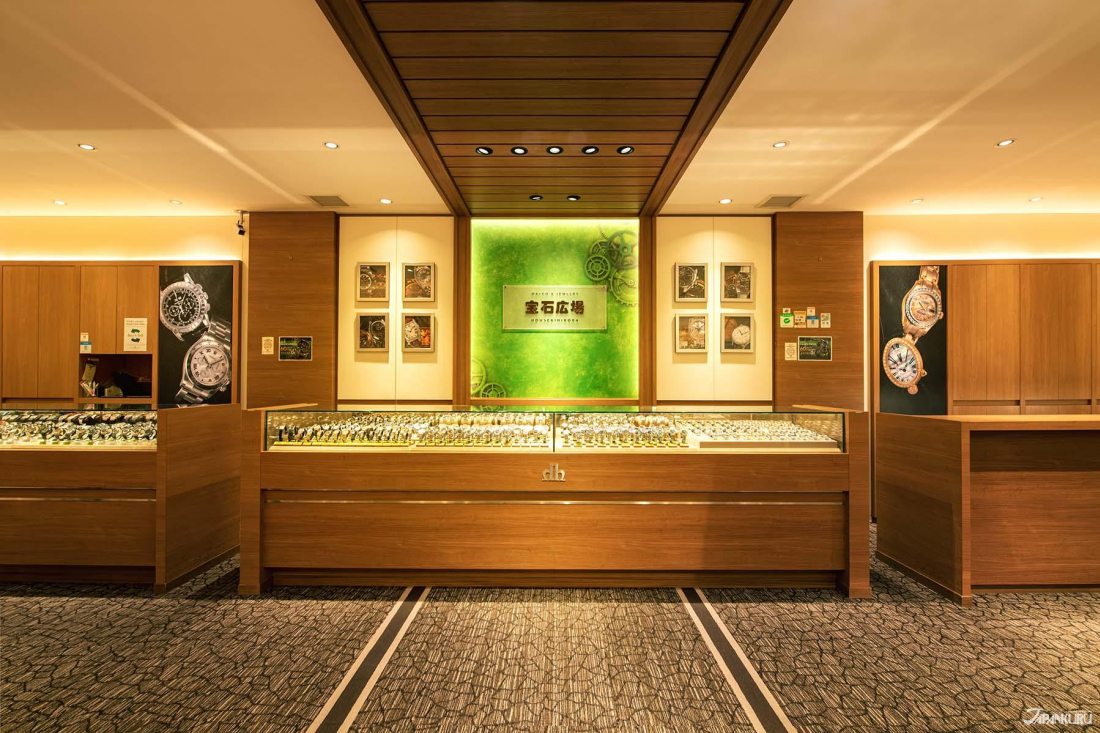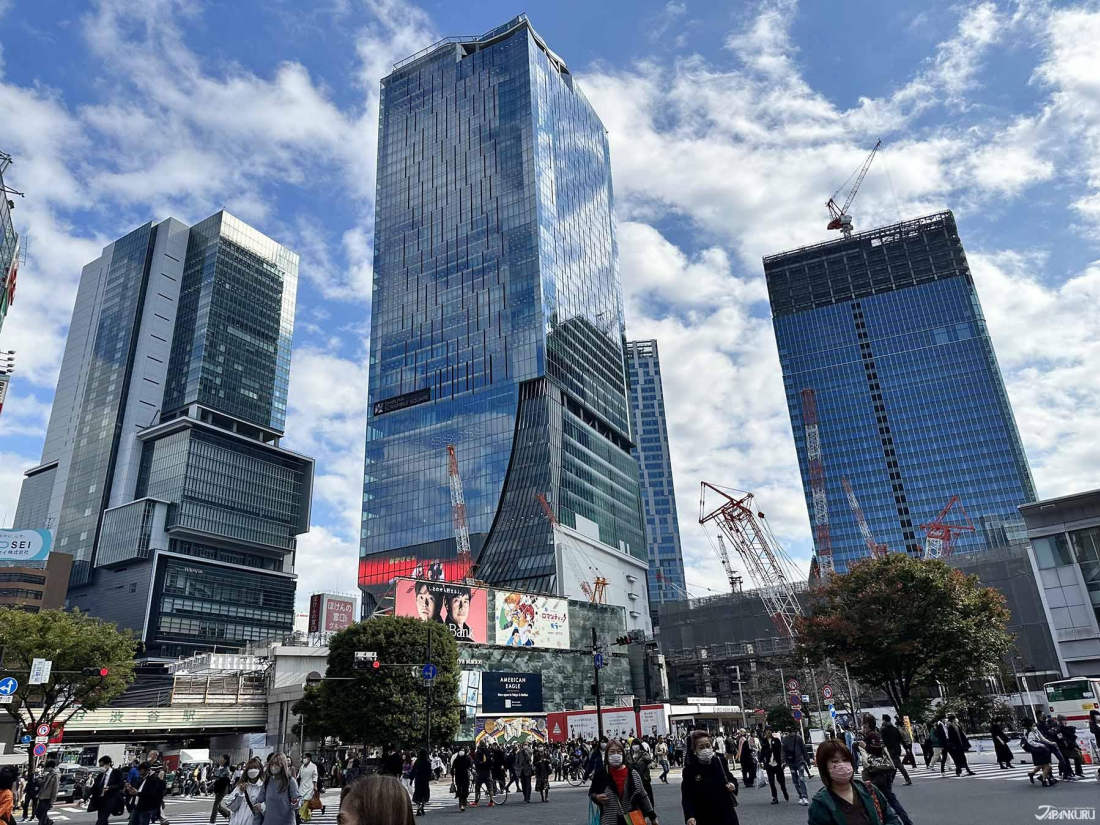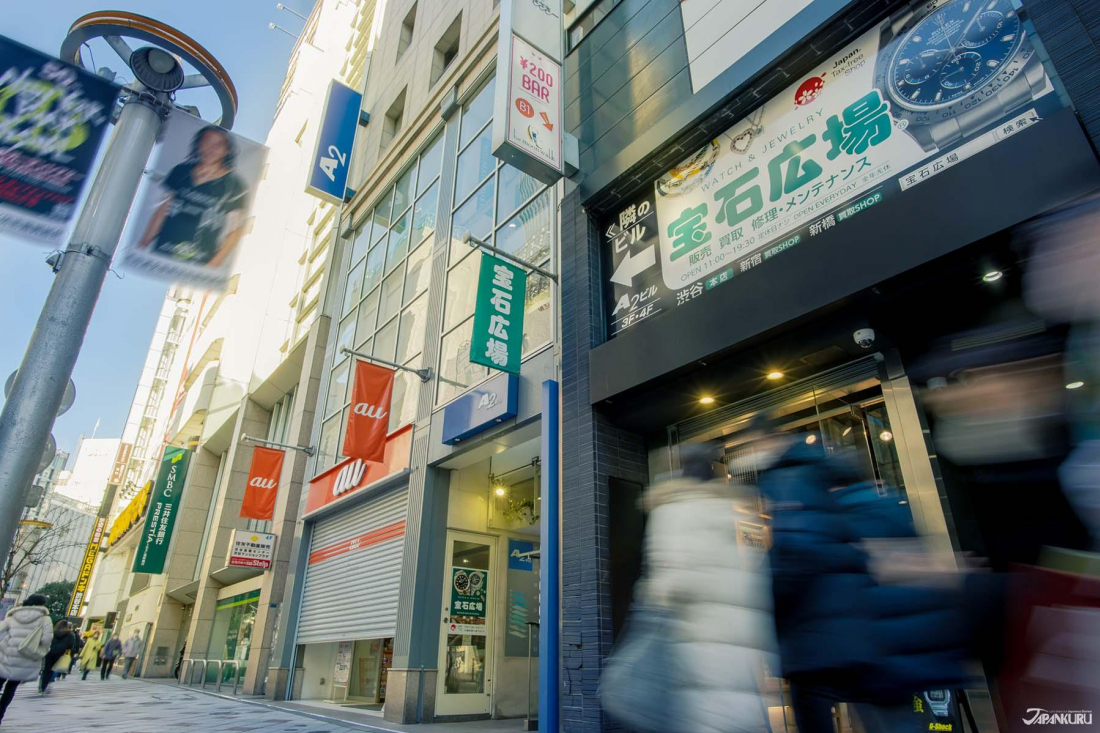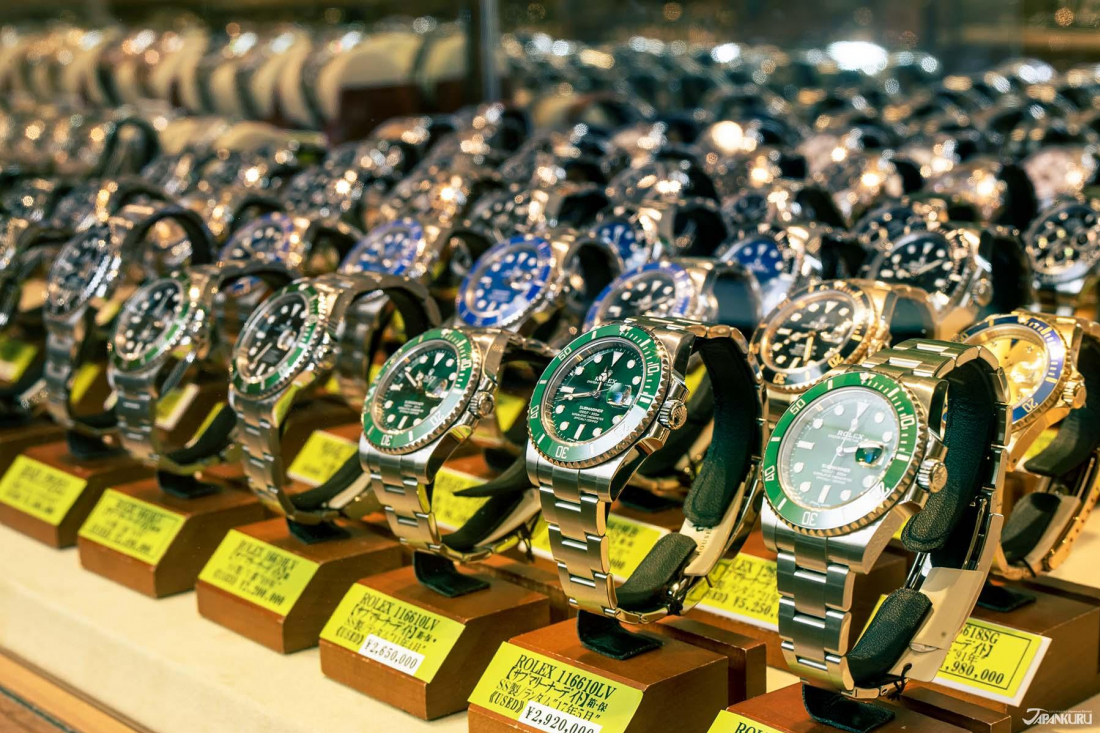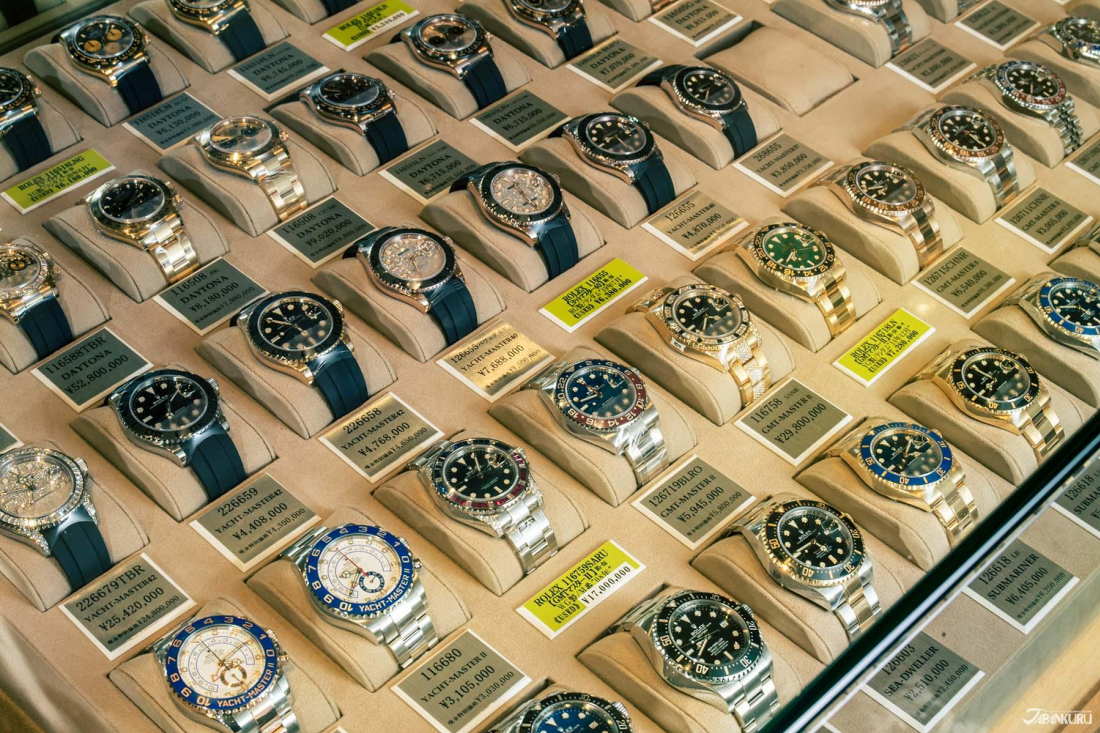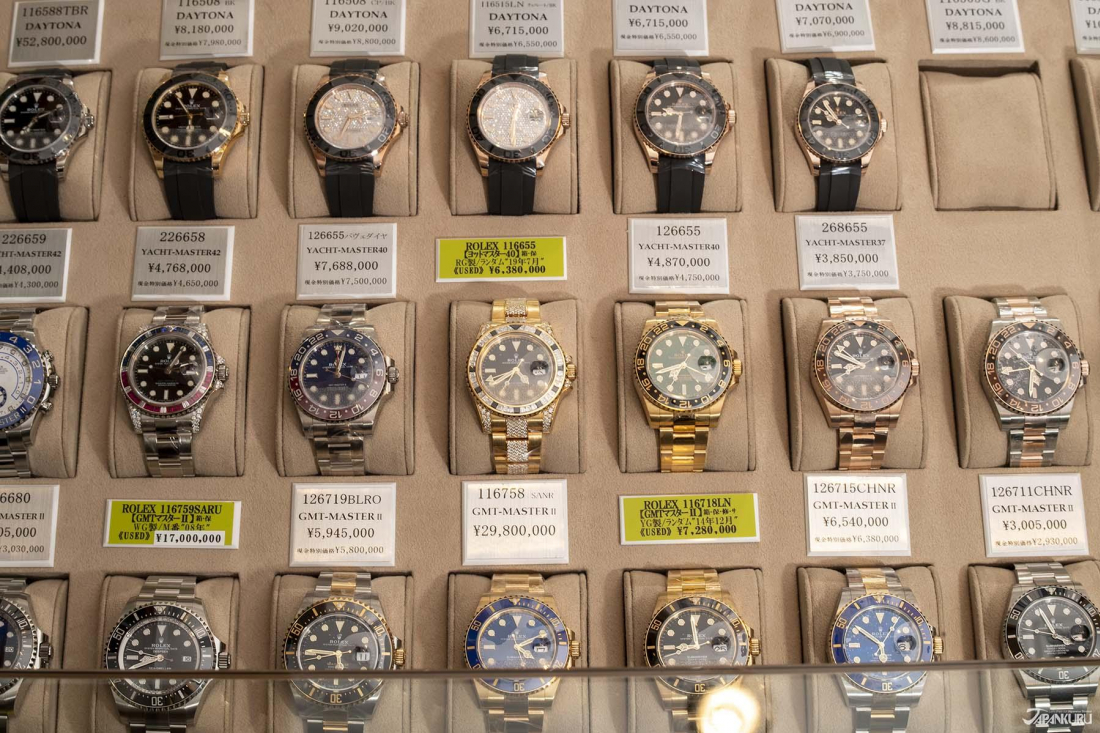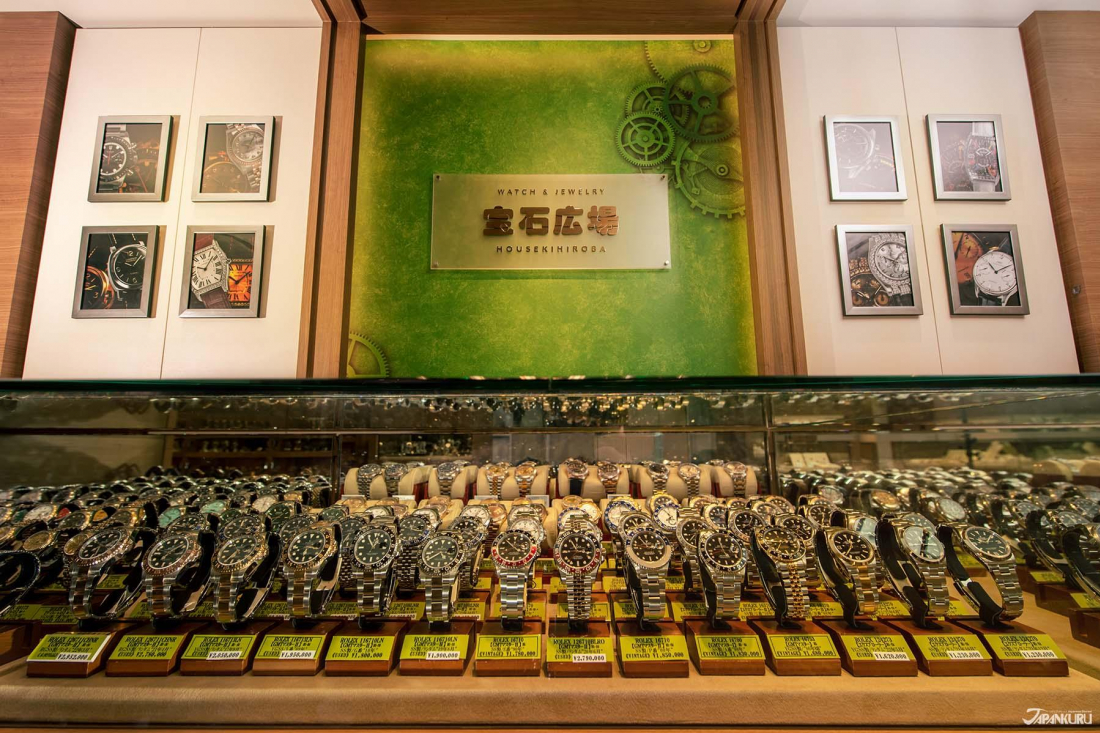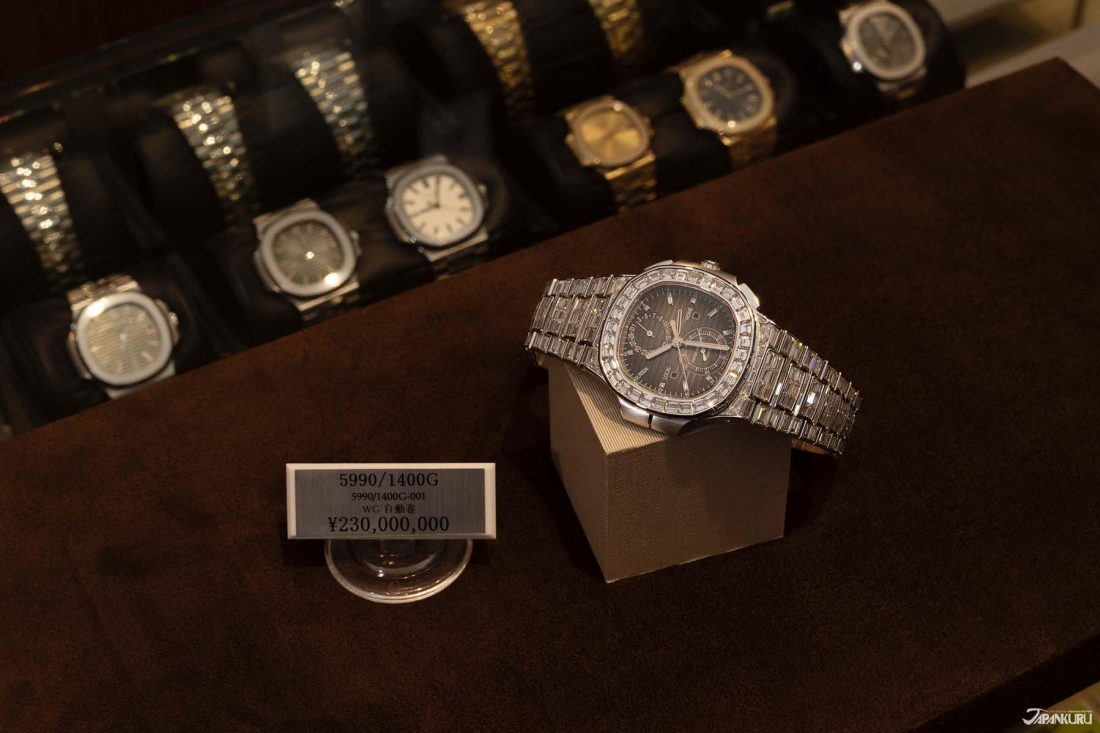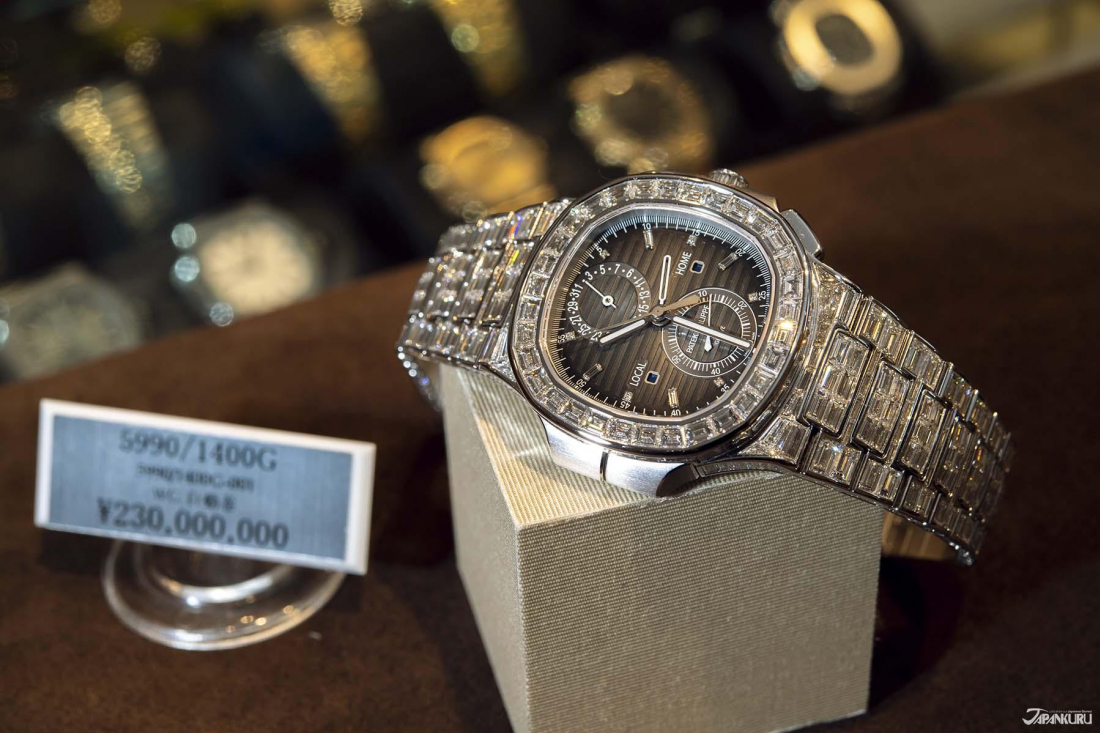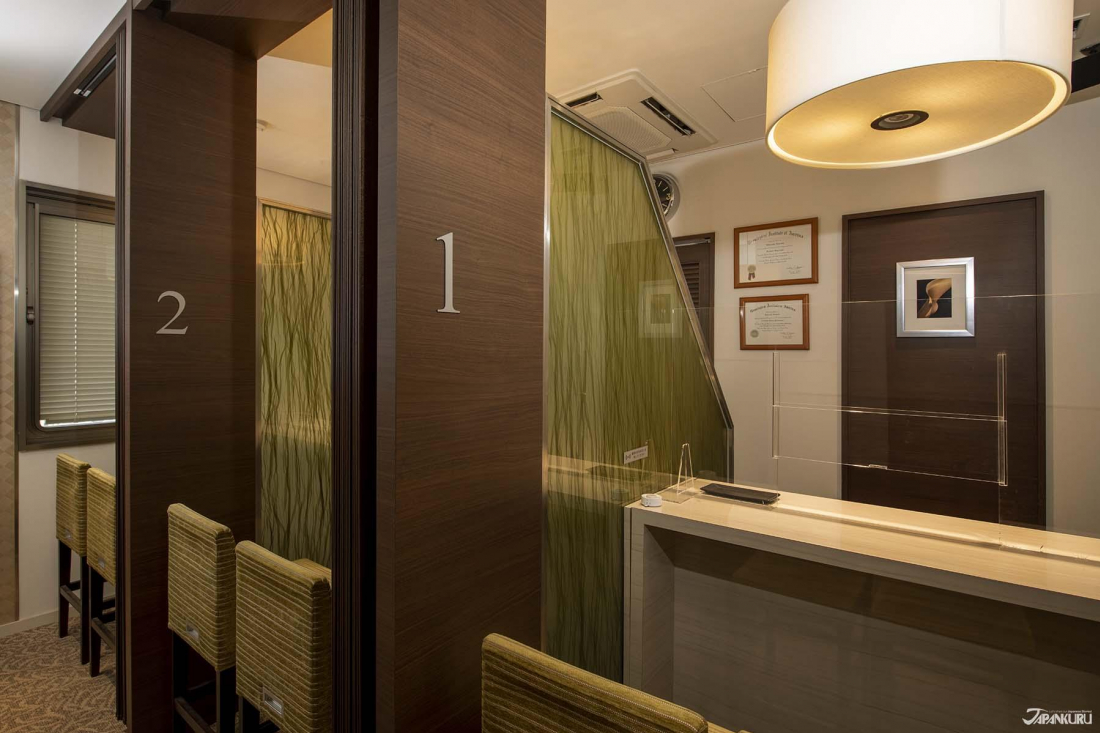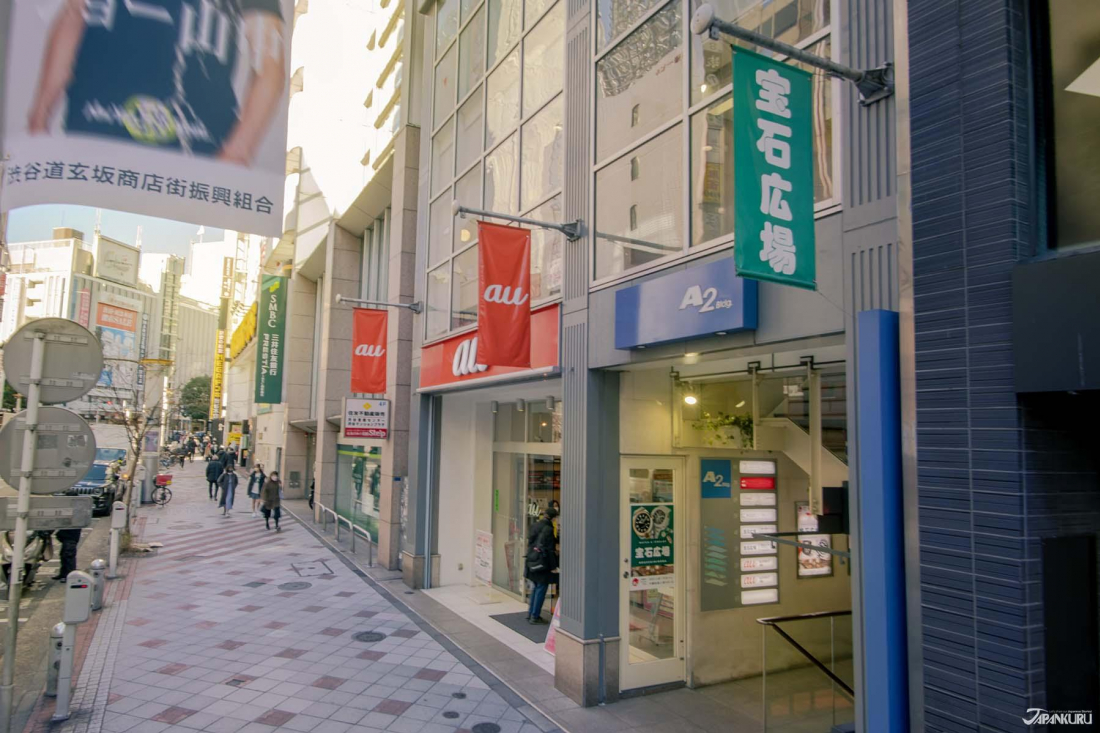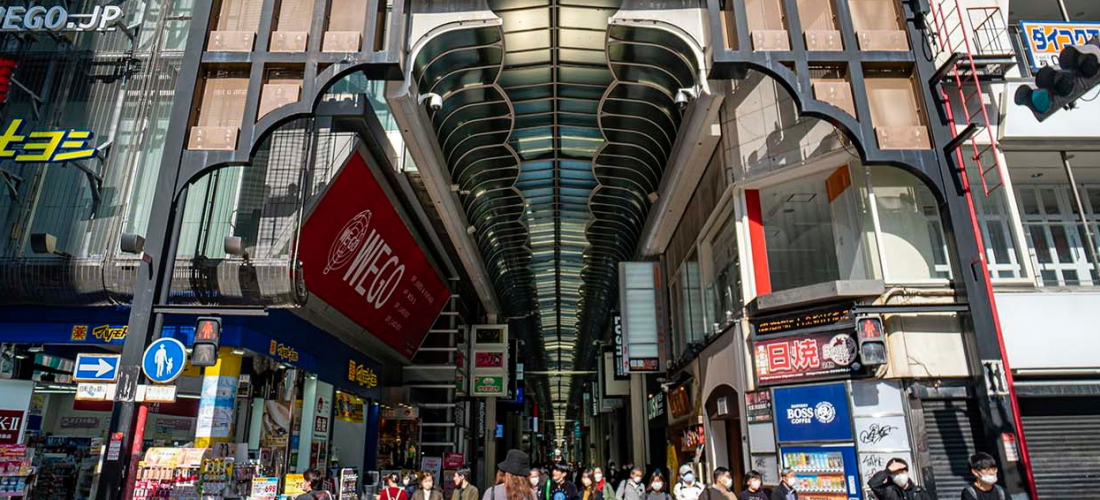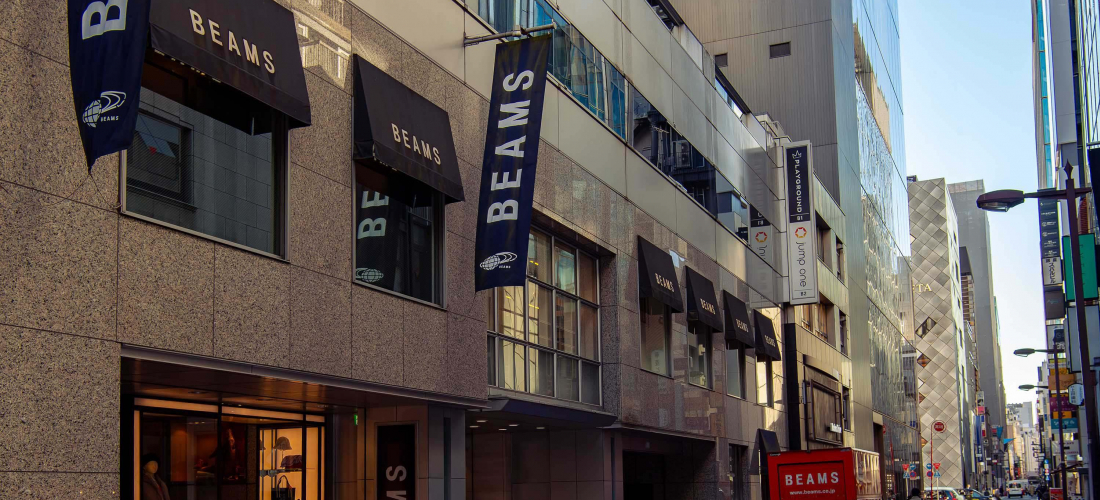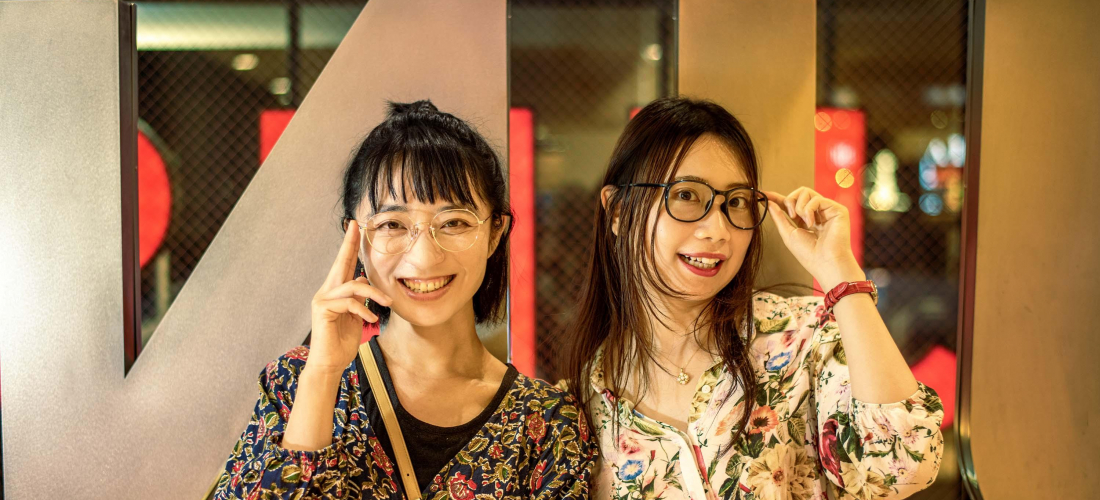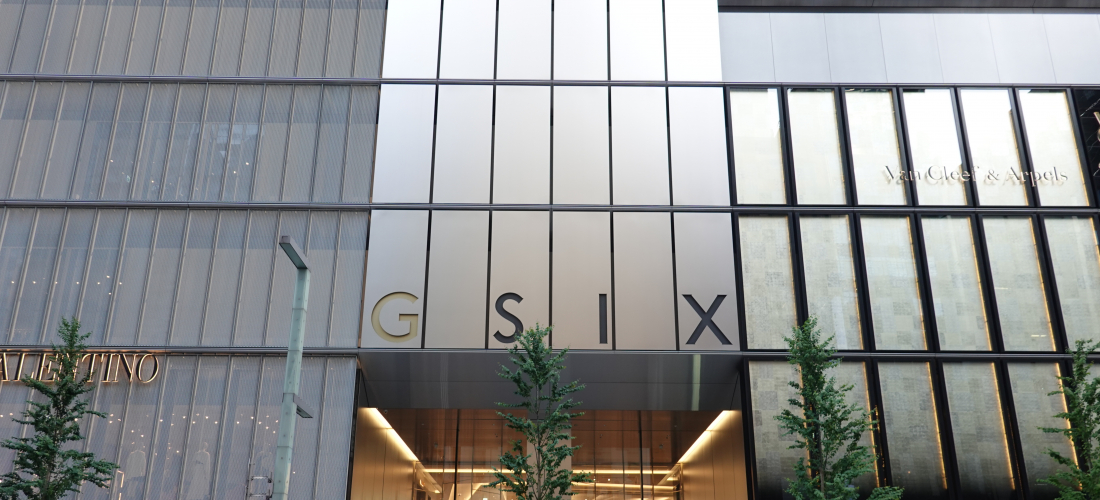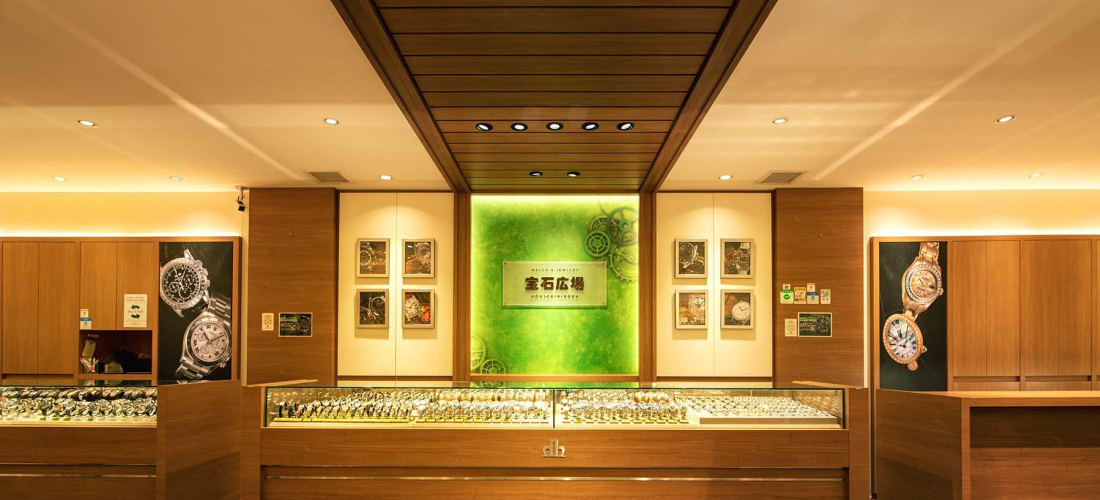
CONTENTS
From the most popular Rolex models to rare Patek Philippe timepieces, find it all at Housekihiroba! As you might expect from a shop literally named “gemstone plaza,” this is the place for luxury watches and jewelry.
Luxury Shopping: One of Tokyo’s Greatest Pleasures
With Japan's borders reopened to the world, Tokyo is now a travel destination at the top of many people's lists. And there are a lot of ways to enjoy the city, from eating delicious local food to seeing the sights and taking pictures at all of Tokyo's hottest new spots, but one activity you won't want to miss out on is Japanese shopping – a joy that has been nigh impossible for tourists over the past three years. With exchange rates still in favor of foreign visitors, plus the temptation of 10% duty-free benefits, it's enough to make Tokyo a priority destination, especially for anyone looking to spend on luxuries like a new watch.
For Luxury Watches in Shibuya…
Tokyo is a great place to buy a watch thanks to the current weak yen and the merits of duty-free shopping, but even more importantly, it's where you'll find a wide range of watches. In Shibuya, you'll be spoiled for choice.
Certain watch stores in Tokyo are known for their great selections, and are famous for having those models that can be hard to find even if you have the money, like recent Rolexes. Housekihiroba stands out from the crowd as a long-established favorite opened in 1963, with a selection that might be Japan's biggest: over 3,000 items including new, used, and vintage watches, plus a collection of fine fewelry. Over the years, the shop has grown a reputation among watch enthusiasts from Japan, and from all over the world.
Housekihiroba (宝石広場)
A2 Bldg. 3F/4F, 28-3 Udagawacho, Shibuya City, Tokyo
Access: 5 min walk from JR Shibuya Station (From the Shibuya Crossing intersection, head to the right side of Shibuya109. Housekihiroba is accross the street from electronics store Labi.)
Phone: 03-5458-5429
Hours: 11:00 – 19:30 (open every day of the year)
Official Website
Japan’s Top-Class Rolex Selection
The biggest appeal of Housekihiroba for many shoppers is the abundant lineup of Rolex timepieces. Despite just about every major retail district in Tokyo having one or two Rolex specialty shops, none of them seem to match the variety found at Housekihiroba.
Silver labels mark brand-new items, and light green labels are for used items, each with accurate years and model numbers, so it's easy to search for each one and check the details on your phone.
Daytona, Yacht-Master, GMT-Master, Submariner – Rolex's most popular models can be found lined up in rows in the shop's main showcase. Just a glimpse through the glass counter makes it clear how broad the selection is.
The Oyster Perpetual Datejust made Rolex the brand it is today, and it's a luxury timepiece that just about any watch lover would love to get their hands on at one point or another (an iconic gift, as well). Even as tastes trend towards larger faces and colorful designs, this model is still loved for its classic look that continues to strongly resemble the earliest editions, with its robust "oyster shell" case.
The Datejust models in women's sizes vary in rarity depending on the particular face color, the numbers on the dial, and other decorations, but as expected of Housekihiroba, there are quite a few to choose from and admire.
Psychological obsolescence, creating the need to replace perfectly functional products with something brand new, is a common sales strategy for modern manufacturers. Applied to the Rolex, it would mean that a Datejust model produced a decade ago would look old and unappealing compared to the most recent releases. And yet, people don't see such a difference, and the Rolex brand has exempted itself from the trend.
The value of a Rolex is so liquid, that some say a Rolex is "the only watch you can trade for a camel in the desert." The timepieces don't greatly depreciate in value, if you ever want to put one back on the market, so a Rolex purchase feels more like "wearing value on your wrist" than simple consumption.
Looking at it from that point of view, Housekihiroba's Rolex collection offers options that are even more rational (and fun) than other luxury watches. If you're looking for a particular model, we recommend getting in contact and seeing what they have available.
It’s Not Just Rolex
Housekihiroba's broad selection of Rolex watches is actually just a part of their timepiece collection. "Gemstone plaza," the literal meaning of "Housekihiroba," isn't much of an exaggeration either. There are shelves lined densely with luxury watches and jewels in every direction.
Scan the shelves and you'll find Omega and Tag Heuer, staple brands that have steadily grown a following, alongside high-end models from Seiko, IWC, Panerai, and Breitling.
Housekihiroba even has a rare Crash model from Cartier in their current collection, with its warped face staring out casually from a shop showcase. This Dali-esque design, one of the most unique and hard-to-find watches in history, comes with a formidable price tag emblazoned with the sum of 28.8 million yen, well over 200,000 dollars.
A Pièce de Résistance
The Crash might be a stunning watch, but you'll want to hold onto your seat for what's coming next. For the Japankuru team, this wasn't just the most expensive watch we saw during our trip to Housekihiroba, but the most expensive watch any of us had seen in our lives.
From the pinnacle of luxury watch brands, worn by celebrities the world over (seen on the wrists of everyone from Brad Pitt to Jay-Z), it's a Patek Philippe Nautilus.
On top of the addition of a Traveltime Chronograph, this model on display at Housekihiroba is set with rows of tightly-packed baguette diamonds, encircling the bezel and reaching all the way down the sides of the band. It's a masterpiece of a watch, and an outstanding example of Patek Philippe's technical prowess.
The number written on the price tag stretches to so many digits that it might be hard to take in at a glance, but the exact price is 230 million yen. That's close to two million dollars. With a price like that, just trying on a watch of this caliber is enough to make you sweat. (As a side note, Housekihiroba staff are known to put on a glove when handling this particular watch.)
The Place to Go for Appraisals, Repairs, and Sales
The source of Housekihiroba's diverse and abundant selection is, of course, the trained eyes on each member of staff, and their skill for thorough appraisal. Luxury mechanical watch maintenance requires regular cleanings, and Housekihiroba services more than 6,000 watches a year, from internal cleaning to repairs. In general, watch prices can vary widely based on the model and the condition of the movement within, so it's not hard to imagine that the know-how that comes from thousands of expert repairs makes the appraisals at Housekihiroba that much more reliable.
On the 4th floor, watches are accurately appraised, and can be sold at a fair market price. For watches previously purchased at Housekihiroba, there's also a bonus condition, which is that for undamaged watches purchased within the past year (previously used items only), they guarantee an offer of at least 70% of the purchase price.
Luxury Watches = Shibuya = Housekihiroba
In 2009, Japan and Switzerland entered into a free trade agreement, and ever since then Swiss-made watches such as Rolex have been somewhere around 20% cheaper in Japan than many other countries around the world. This has also led to a domestic cycle of watch sales and resales, encouraging competitive pricing, and all of this has helped collections in Japan to gather a diverse and unique selection of these treasured timepieces. At the same time, purchasing a valuable luxury watch purely on the merits of price is a risky endeavor. Between the helpful staff, their transparent distribution process, and the consideration they put into the care of each item even after its sale, Housekihiroba's many years of experience in this field make the shop a reliable place for a luxury purchase.
For some people, luxury watch shopping is a long-awaited dream come true, and for others, it's a meaningful mark for an important life event. In Japan, to find the best choice from the many possibilities, we recommend Shibuya's Housekihiroba.
For more info and updates from Japan, check Japankuru for new articles, and don't forget to follow us on Twitter, Instagram, and Facebook!
COMMENT
FEATURED MEDIA
VIEW MORE 
A New Tokyo Animal Destination: Relax & Learn About the World’s Animals in Japan
#pr #japankuru #anitouch #anitouchtokyodome #capybara #capybaracafe #animalcafe #tokyotrip #japantrip #카피바라 #애니터치 #아이와가볼만한곳 #도쿄여행 #가족여행 #東京旅遊 #東京親子景點 #日本動物互動體驗 #水豚泡澡 #東京巨蛋城 #เที่ยวญี่ปุ่น2025 #ที่เที่ยวครอบครัว #สวนสัตว์ในร่ม #TokyoDomeCity #anitouchtokyodome

Shohei Ohtani Collab Developed Products & Other Japanese Drugstore Recommendations From Kowa
#pr #japankuru
#kowa #syncronkowa #japanshopping #preworkout #postworkout #tokyoshopping #japantrip #일본쇼핑 #일본이온음료 #오타니 #오타니쇼헤이 #코와 #興和 #日本必買 #日本旅遊 #運動補充能量 #運動飲品 #ช้อปปิ้งญี่ปุ่น #เครื่องดื่มออกกำลังกาย #นักกีฬา #ผลิตภัณฑ์ญี่ปุ่น #อาหารเสริมญี่ปุ่น

도쿄 근교 당일치기 여행 추천! 작은 에도라 불리는 ‘가와고에’
세이부 ‘가와고에 패스(디지털)’ 하나면 편리하게 이동 + 가성비까지 완벽하게! 필름카메라 감성 가득한 레트로 거리 길거리 먹방부터 귀여움 끝판왕 핫플&포토 스폿까지 총집합!
Looking for day trips from Tokyo? Try Kawagoe, AKA Little Edo!
Use the SEIBU KAWAGOE PASS (Digital) for easy, affordable transportation!
Check out the historic streets of Kawagoe for some great street food and plenty of picturesque retro photo ops.
#pr #japankuru #도쿄근교여행 #가와고에 #가와고에패스 #세이부패스 #기모노체험 #가와고에여행 #도쿄여행코스 #도쿄근교당일치기 #세이부가와고에패스
#tokyotrip #kawagoe #tokyodaytrip #seibukawagoepass #kimono #japantrip

Hirakata Park, Osaka: Enjoy the Classic Japanese Theme Park Experience!
#pr #japankuru #hirakatapark #amusementpark #japantrip #osakatrip #familytrip #rollercoaster #retrôvibes #枚方公園 #大阪旅遊 #關西私房景點 #日本親子旅行 #日本遊樂園 #木造雲霄飛車 #히라카타파크 #สวนสนุกฮิราคาตะพาร์ค

🍵Love Matcha? Upgrade Your Matcha Experience With Tsujiri!
・160년 전통 일본 말차 브랜드 츠지리에서 말차 덕후들이 픽한 인기템만 골라봤어요
・抹茶控的天堂!甜點、餅乾、飲品一次滿足,連伴手禮都幫你列好清單了
・ส่องมัทฉะสุดฮิต พร้อมพาเที่ยวร้านดังในอุจิ เกียวโต
#pr #japankuru #matcha #matchalover #uji #kyoto #japantrip #ujimatcha #matchalatte #matchasweets #tsujiri #말차 #말차덕후 #츠지리 #교토여행 #말차라떼 #辻利抹茶 #抹茶控 #日本抹茶 #宇治 #宇治抹茶 #日本伴手禮 #抹茶拿鐵 #抹茶甜點 #มัทฉะ #ของฝากญี่ปุ่น #ชาเขียวญี่ปุ่น #ซึจิริ #เกียวโต

・What Is Nenaito? And How Does This Sleep Care Supplement Work?
・你的睡眠保健品——認識「睡眠茶氨酸錠」
・수면 케어 서플리먼트 ‘네나이토’란?
・ผลิตภัณฑ์เสริมอาหารดูแลการนอน “Nenaito(ネナイト)” คืออะไร?
#pr #japankuru #sleepcare #japanshopping #nenaito #sleepsupplement #asahi #睡眠茶氨酸錠 #睡眠保健 #朝日 #l茶胺酸 #日本藥妝 #日本必買 #일본쇼핑 #수면 #건강하자 #네나이토 #일본영양제 #อาหารเสริมญี่ปุ่น #ช้อปปิ้งญี่ปุ่น #ร้านขายยาญี่ปุ่น #ดูแลตัวเองก่อนนอน #อาซาฮิ

Japanese Drugstore Must-Buys! Essential Items from Hisamitsu® Pharmaceutical
#PR #japankuru #hisamitsu #salonpas #feitas #hisamitsupharmaceutical #japanshopping #tokyoshopping #traveltips #japanhaul #japantrip #japantravel

Whether you grew up with Dragon Ball or you just fell in love with Dragon Ball DAIMA, you'll like the newest JINS collab. Shop this limited-edition Dragon Ball accessory collection to find some of the best Dragon Ball merchandise in Japan!
>> Find out more at Japankuru.com! (link in bio)
#japankuru #dragonball #dragonballdaima #animecollab #japanshopping #jins #japaneseglasses #japantravel #animemerch #pr

This month, Japankuru teamed up with @official_korekoko to invite three influencers (originally from Thailand, China, and Taiwan) on a trip to Yokohama. Check out the article (in Chinese) on Japankuru.com for all of their travel tips and photography hints - and look forward to more cool collaborations coming soon!
【橫濱夜散策 x 教你怎麼拍出網美照 📸✨】
每次來日本玩,是不是都會先找旅日網紅的推薦清單?
這次,我們邀請擁有日本豐富旅遊經驗的🇹🇭泰國、🇨🇳中國、🇹🇼台灣網紅,帶你走進夜晚的橫濱!從玩樂路線到拍照技巧,教你怎麼拍出最美的夜景照。那些熟悉的景點,換個視角說不定會有新發現~快跟他們一起出發吧!
#japankuru #橫濱紅磚倉庫 #汽車道 #中華街 #yokohama #japankuru #橫濱紅磚倉庫 #汽車道 #中華街 #yokohama #yokohamaredbrickwarehouse #yokohamachinatown

If you’re a fan of Vivienne Westwood's Japanese designs, and you’re looking forward to shopping in Harajuku this summer, we’ve got important news for you. Vivienne Westwood RED LABEL Laforet Harajuku is now closed for renovations - but the grand reopening is scheduled for July!
>> Find out more at Japankuru.com! (link in bio)
#japankuru #viviennewestwood #harajuku #omotesando #viviennewestwoodredlabel #viviennewestwoodjapan #비비안웨스트우드 #오모테산도 #하라주쿠 #日本購物 #薇薇安魏斯伍德 #日本時尚 #原宿 #表參道 #japantrip #japanshopping #pr

Ready to see TeamLab in Kyoto!? At TeamLab Biovortex Kyoto, the collective is taking their acclaimed immersive art and bringing it to Japan's ancient capital. We can't wait to see it for ourselves this autumn!
>> Find out more at Japankuru.com! (link in bio)
#japankuru #teamlab #teamlabbiovortex #kyoto #kyototrip #japantravel #artnews
Photos courtesy of teamLab, Exhibition view of teamLab Biovortex Kyoto, 2025, Kyoto ® teamLab, courtesy Pace Gallery

Japanese Makeup Shopping • A Trip to Kamakura & Enoshima With Canmake’s Cool-Toned Summer Makeup
#pr #canmake #enoshima #enoden #에노시마 #캔메이크 #japanesemakeup #japanesecosmetics

⚔️The Robot Restaurant is gone, but the Samurai Restaurant is here to take its place. Check it out, and don't forget your coupon!
🍣신주쿠의 명소 로봇 레스토랑이 사무라이 레스토랑으로 부활! 절찬 쿠폰 발급중
💃18歲以上才能入場的歌舞秀,和你想的不一樣!拿好優惠券去看看~
#tokyo #shinjuku #samurairestaurant #robotrestaurant #tokyotrip #도쿄여행 #신주쿠 #사무라이레스토랑 #이색체험 #할인이벤트 #歌舞伎町 #東京景點 #武士餐廳 #日本表演 #日本文化體驗 #japankuru #japantrip #japantravel #japanlovers #japan_of_insta

Japanese appliance & electronics shopping with our KOJIMA x BicCamera coupon!
用JAPANKURU的KOJIMA x BicCamera優惠券買這些正好❤️
코지마 x 빅 카메라 쿠폰으로 일본 가전 제품 쇼핑하기
#pr #japankuru #japanshopping #kojima #biccamera #japaneseskincare #yaman #dji #osmopocket3 #skincaredevice #日本購物 #美容儀 #相機 #雅萌 #日本家電 #일본여행 #면세 #여행꿀팁 #일본쇼핑리스트 #쿠폰 #일본쇼핑 #일본브랜드 #할인 #코지마 #빅카메라 #japankurucoupon

